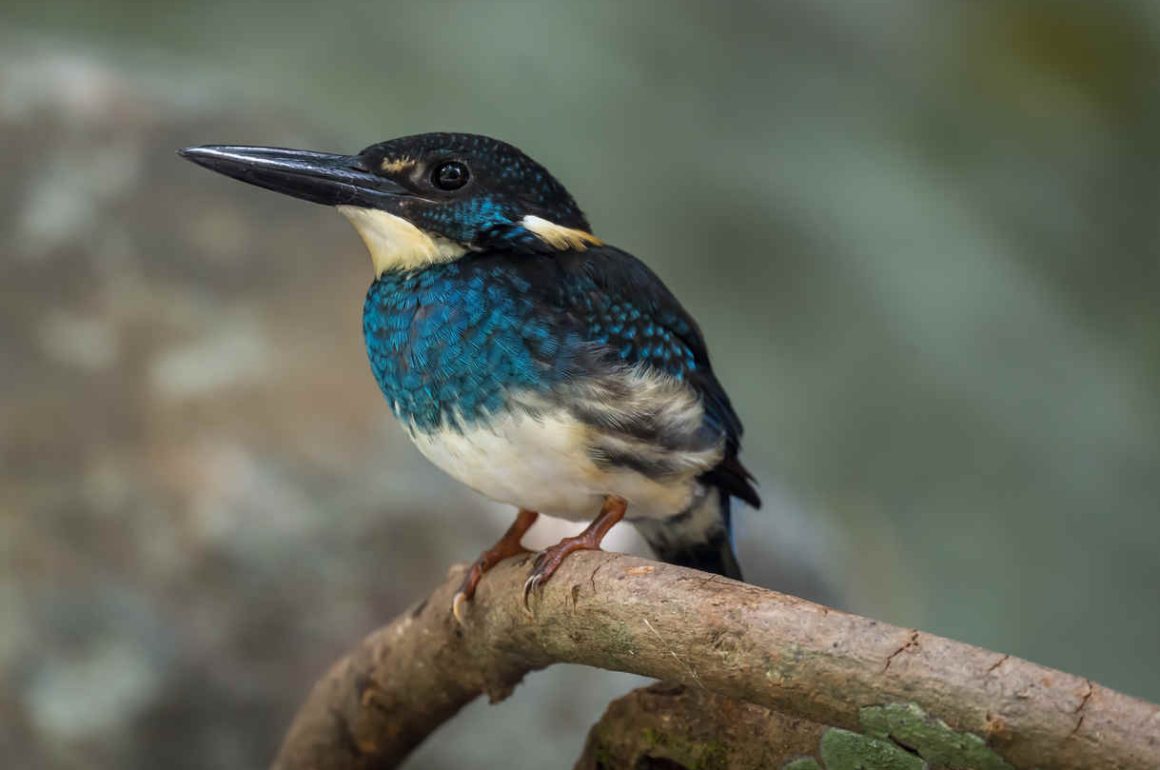
California Condor
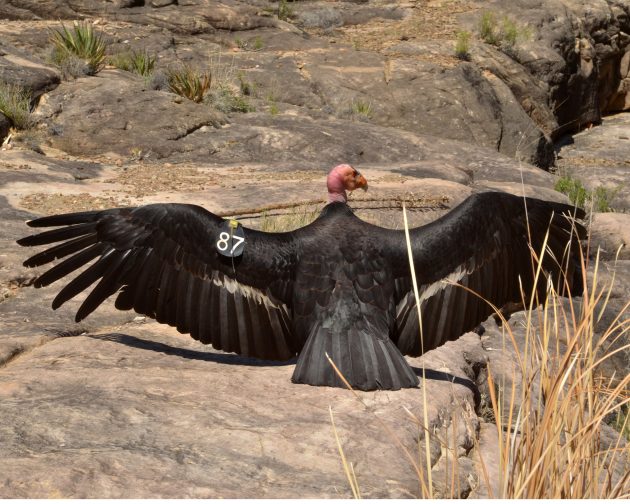
In 2005, after my father died, my mother (aka the Gambling Grandma) wanted to visit Las Vegas one last time and asked if we would go with her. We figured we had to take one trip to this adult playground, although we had no interest in the casinos. I did my research and found that there were lots of spots in and around Las Vegas for birding, which I enjoyed visiting while my husband enjoyed seeing the desert scenery. We even met a local birder, who couldn’t believe we didn’t carry a gun for safety, like he did (welcome to America, folks).
I noticed a bus tour to the Grand Canyon and we made a booking. I had read about the efforts to save and reintroduce the California Condor to the Grand Canyon area. I really wanted to see these magnificent, prehistoric raptors. We arrived at the South Rim. I hurried out to the edge and saw two researchers, who looked like they were tracking birds. They said I had just missed a pair and joked that I had spent too much time in the gift shop. Hmph! I never waste time when it comes to a lifer, and a spectacular one at that.
We walked all around the area, enjoying the scenery, but no condors. Shortly before it was time to leave, we were standing at the edge one last time before getting back on the bus. Suddenly, two condors rose up above us. I was jumping up and down, excitedly telling a Hispanic family to look at these remarkable birds. (I heard them say eagle in Spanish, so I guess they weren’t birders). As quickly as the condors arrived, they then soared toward the North Rim. Our bus driver came to find us and drag me away. He asked if I got their wing-tag numbers, which I missed in my excitement.
By the way, the Grand Canyon was pretty magnificent, too (Leslie Kinrys).
Echo Parakeet, Mauritius
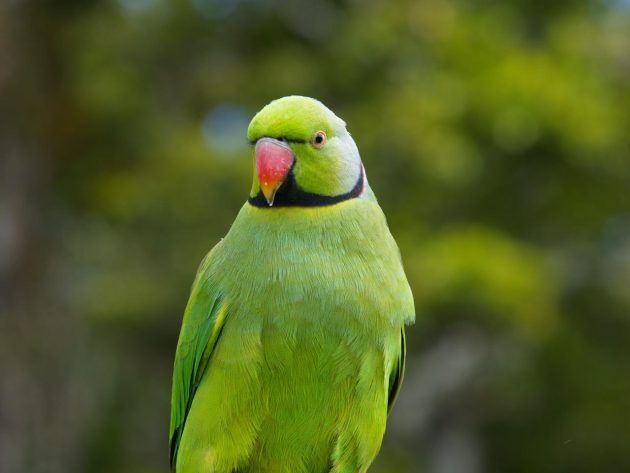
Defining a rare bird isn’t quite as simple as it may seem. Here in Britain, a rare bird usually refers to a bird that is rarely seen in this country, but the bird itself may not really be rare at all, at least in world terms. A classic example is the Black Kite, an abundant bird throughout much of Europe, Africa, and Asia, but one which only rarely wanders as far north as Britain. Some years ago, one flew over my house in Suffolk – my companion was carrying a camera with a long lens, so managed to photograph it, giving definite proof of its occurrence.
The rarest birds I’ve ever seen were both on the Indian-Ocean island of Mauritius: the Mauritius Kestrel and the Echo Parakeet. This was in 1979, and at the time, the world population of both species was fewer than 10 individuals, so they weren’t just rare, they were critically endangered. To see the birds, I’d taken a taxi from my hotel to the Black River Gorges, where I met up with a Welshman, Carl Jones, who at the time was starting a conservation project to save them. I don’t think that many people thought that he stood much chance of success.
Remarkably, he did turn round their fortunes, and today both species have populations numbered in hundreds. They have been removed from the critically endangered lists, and while the kestrel is still listed as endangered, the parakeet is now just vulnerable. I still have fond memories of my first encounter with these birds (I’ve seen them again on a more recent visit to Mauritius), and I also recall a wonderfully cooling celebratory swim with Carl in the Black River after seeing them. What is extremely pleasing to note is that though these birds may have been the rarest in the world when I saw them, they’re not anymore (David Tomlinson).
Newton’s Fiscal
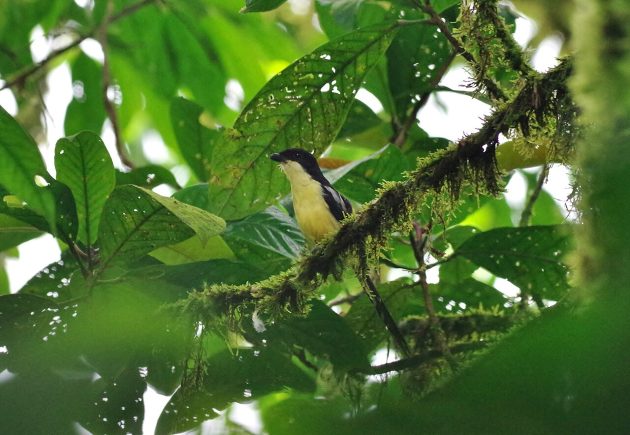
Without question, the rarest bird I have ever seen was Newton’s Fiscal on the island of São Tomé. According to 2020 estimations, there are 50-249 mature individuals in the wild, which makes it a critically endangered bird. I have seen 4% of the lower end of the estimate. To put that into perspective: if you see 4% of the chickens in the Netherlands, you will have a whopping four million chooks in your binocular sights, whereas I only saw two fiscals … (Peter Penning).
Javan Blue-banded Kingfisher

While the Spoon-billed Sandpiper is extremely rare, the Javan Blue-banded Kingfisher – seen at Gunung Liman on Java in October 2024 – is even rarer. Seeing one and then reading in the HBW about its population (“The total number of mature individuals is only 50–240 or even lower” – even lower than 50, is that still a positive number then?) makes me shiver even now.
The additional information in the HBW is hardly comforting either: “It is scarcely seen and the remaining populations are presumed to be extremely small. Classified as globally Critically Endangered owing to the continuing loss of lowland forest.” (Kai Pflug)
Golden Nightjar
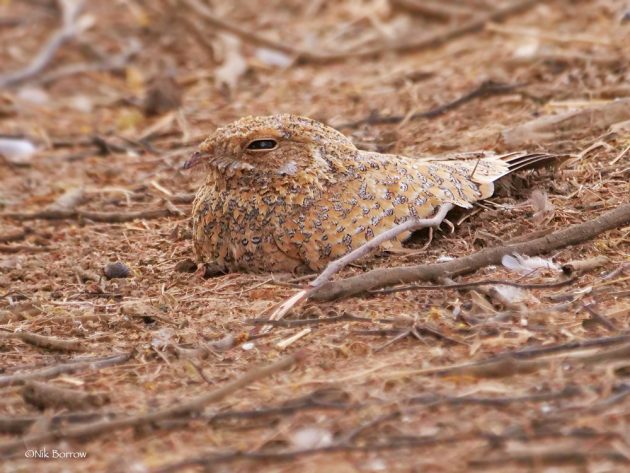
My interpretation of this prompt was in terms of data and frequency of reporting, as eBird is the lens through which I view the world. It is tough to differentiate which species is the “rarest bird” seen, but thanks to BirdSTAT, it’s easier to figure out… at least when it comes to eBird.
BirdSTAT spit out that my rarest bird was the Golden Nightjar, which I saw along the border of Senegal and Mauritania in a fallow farm field. We arrived in the fields just before 6:00 pm and wandered through an empty creek bed scaring up Namaqua Doves and Village Weavers. Eventually, the sun started to set, and the visibility was decreasing, and finally, our target, Golden Nightjar, was flitting around! We spooked it a few times, and it flew around, but unfortunately, it was too dark for any photos, so we will live with the memory of plodding through an uneven farm field with brief glimpses of this gorgeous bird.
eBird shows 140 observations of this species. However, it is likely to be much more commonly reported on other bird sighting services. Nevertheless, eBird records are lacking for many West African nations due to the region being under-birded by eBird’s user base. This species is listed as “Least Concern,” which goes to show you that the species themselves are not the rarest, but the reporting definitely is! (Hannah Buschert)
Ruddy Kingfisher

What is a rare bird? Seems odd that I should ask this question now.
Is it a bird for which there are only a few remaining? Is it a bird that occupies only a small area on the map? Is it one that is essentially inaccessible? Is it a bird that you have failed over and over to see and then, finally, see one or two? Is it a bird for which you have absolutely no hope of ever seeing again?
10,000 Birds has published a couple of very good recent pieces that fall into one or more of the above categories. The Remotest Endemic Birds by James on August 23 is one; another is Finfoot by Faraaz Abdool on August 21. One of my favorite essayists and avid birder, Jonathan Franzen, wrote Farther Away about his search for the Masafuera Rayadito on a remote island off the coast of Chile. He risked his life on this adventure but failed to see the bird.
My rarest bird falls into the last category, one that I have no hope of ever seeing again. True, its range is not small, but it’s not all that big either, and my bird was somewhat inaccessible. And, it is one where I was in a place where I had no plans to visit. It is also a bird that is in one of my favorite bird families – kingfishers.
On a 2023 birding trip to the Andaman Islands in the Bay of Bengal, there were no plans for us to visit Swaraj Dweep, formerly Havelock Island. But secondary to a coup d’état waged by two non-birders on a birding trip, the tour company and our field guide were forced to make two unplanned detours. The other unplanned island we visited was Shaheed Dweep, formerly Neil Island. Overall, this was a wholly unpleasant experience. I don’t wish it on anyone. But our guides (we also had an excellent local guide) did their best to keep the birding going, and with this, they did a good job.
One afternoon, we visited a mangrove forest to find Ruddy Kingfisher (Halcyon coromanda). Our local guide used callback, and if I am remembering correctly, the Ruddy Kingfisher responded relatively quickly. I am not skilled at birding in mangrove forests, and to increase the degree of difficulty, there was a chain link fence between where we stood and the mangroves. Though the Ruddy Kingfisher was not perched too deep into the mangroves, it was still hard to find with bins. Of course, once seen, we also wanted photos. The chain link fence turned out to be a focusing barrier.
I was using a hybrid zoom. My first three or four photos were nearly unidentifiable. I looked for a different angle where the bird could be more clearly seen. I zoomed in through one of the fence links and began to get identifiable photos and, under the circumstances and by my standards, even good photos. This sort of birding is thrilling for me and all the more valued considering that, really, it should not have happened.
The Andaman Islands have many endemic species, which we saw and which would be considered rarer than the Ruddy Kingfisher. One of these is a very difficult bird to see, the Andaman Crake. While I may visit India again, I will not go to the Andaman Islands again. The Ruddy Kingfisher can be found in other South and East Asian countries, but I am unlikely to ever visit these countries. My love of kingfishers, the beauty of the Ruddy Kingfisher, and the otherwise complete happenstance of seeing it make it my rarest bird (Catherine Carroll).
Newton’s Fiscal Photo: Licensed under Creative Commons Attribution-Share Alike 4.0 International
California Condor: “Grand Canyon National Park: California Condor 87_3462” by Grand Canyon NPS is licensed under CC BY 2.0.
“Golden Nightjar Caprimulgus eximius simplicior” by nik.borrow is licensed under CC BY-NC 2.0.








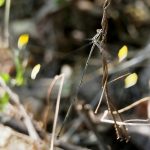
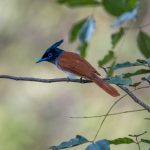

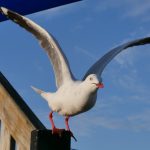

Leave a Comment